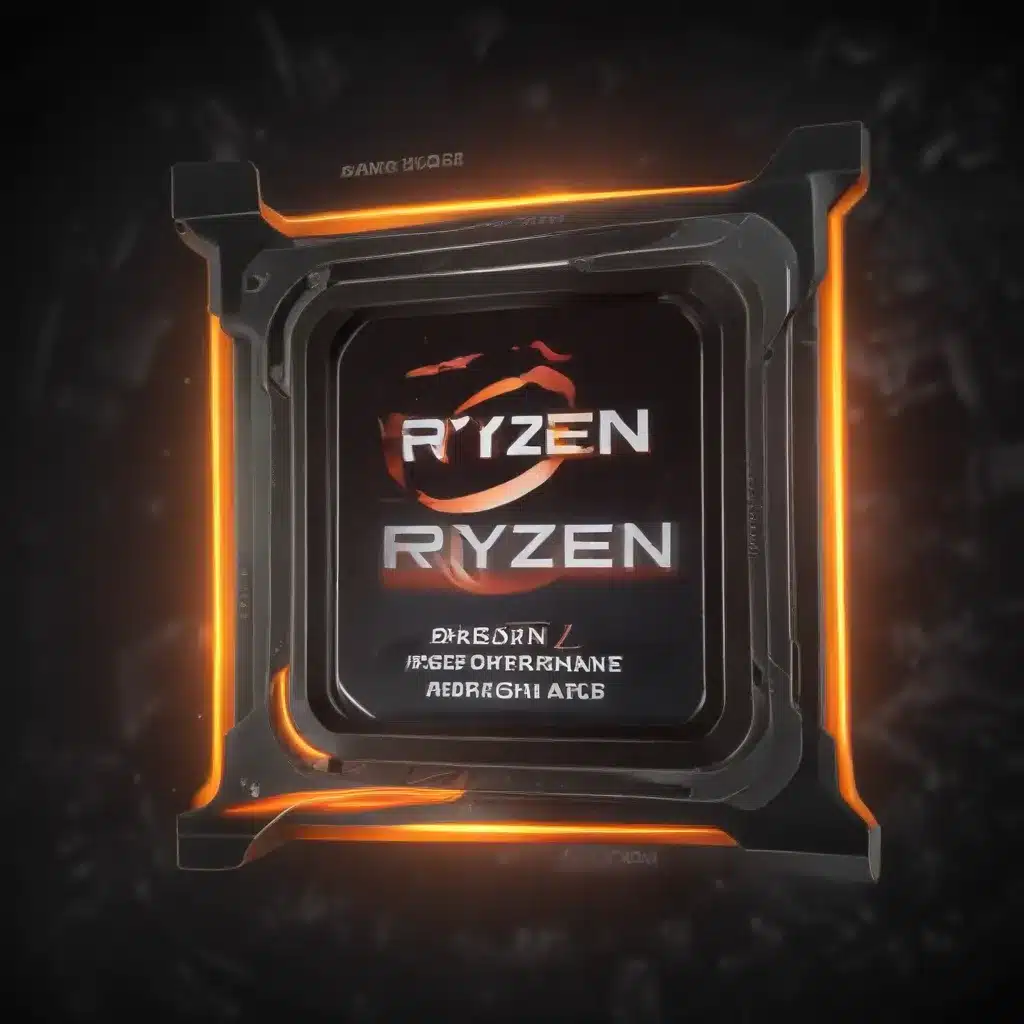
AMD Ryzen 7000 Series Processors
The launch of AMD’s Ryzen 7000 series processors has ushered in a new era of performance and efficiency for PC enthusiasts and power users alike. Powered by the cutting-edge Zen 4 microarchitecture and fabricated on the advanced 5nm process, these CPUs deliver a significant leap in single-threaded and multi-threaded capabilities compared to their predecessors.
CPU Architecture and Microarchitecture
The Zen 4 microarchitecture at the heart of the Ryzen 7000 series introduces several key enhancements. These include a larger L2 cache, improved branch prediction, and more efficient execution units. The chiplet design, which separates the CPU cores from the I/O die, has also been refined to optimize power delivery and thermal management.
Crucially, the shift to TSMC’s 5nm process node enables higher clock speeds and better power efficiency, unlocking even greater performance potential. By leveraging the improved transistor density and characteristics, AMD has been able to push the boundaries of what’s possible with a modern desktop CPU.
Precision Boost Overdrive (PBO)
One of the standout features of the Ryzen 7000 series is Precision Boost Overdrive (PBO). This dynamic overclocking technology allows the CPU to intelligently adjust its clock speeds and power consumption based on the workload and thermal conditions. PBO is designed to extract the maximum performance from the processor while staying within the defined power and thermal limits.
To configure PBO, users can access the advanced options in their system’s BIOS. Here, they can fine-tune the power and thermal limits (PPT, TDC, and EDC) to optimize performance for their specific cooling setup and workloads. By pushing these limits higher, the CPU can be coaxed to deliver even more performance, though care must be taken to ensure system stability and longevity.
Curve Optimizer
Another powerful tuning tool in the Ryzen 7000 arsenal is the Curve Optimizer. This feature allows users to individually adjust the voltage-frequency curve for each CPU core, enabling a more granular approach to undervolting and performance optimization.
The Curve Optimizer works by applying a negative offset to the core voltage, which can result in lower temperatures and increased clock speeds. However, it’s crucial to find the right balance, as being too aggressive with the undervoltage can lead to system instability or even crashes.
To get the most out of the Curve Optimizer, users should test each core individually using tools like OCCT or CoreCycler. This ensures that the optimal negative offset is applied to each core, maximizing performance and stability. It’s also important to leave a small safety margin by backing off the undervoltage slightly from the maximum stable setting.
System Configuration and Monitoring
Alongside the powerful tuning capabilities of PBO and Curve Optimizer, users should also pay close attention to their system’s power supply, cooling solution, and overall configuration.
Ensure that your power supply is capable of handling the increased power draw of the Ryzen 7000 CPU, especially when pushing the limits with PBO. A high-quality, beefy power supply is essential to provide the necessary power and stability.
Similarly, the cooling solution plays a critical role in unleashing the full potential of these processors. High-performance air coolers or liquid cooling setups are recommended to keep temperatures in check, as the Ryzen 7000 series can generate significant heat under heavy loads.
Monitor your system’s performance and temperatures using tools like HWiNFO64 and Ryzen Master. This will help you understand the impact of your PBO and Curve Optimizer settings, allowing you to make informed adjustments for optimal results.
Benchmarking and Performance Metrics
To quantify the improvements made through PBO and Curve Optimizer tuning, it’s essential to benchmark your system’s performance across a variety of workloads. This includes both single-threaded and multi-threaded scenarios, as well as gaming and productivity tasks.
Popular benchmarking tools like Cinebench R23, CPU-Z, and Geekbench 5 can provide a comprehensive overview of your CPU’s capabilities. Additionally, testing your system’s performance in real-world applications, such as video editing, 3D rendering, or even gaming, can give you a better understanding of the tangible benefits of your tuning efforts.
By carefully monitoring and comparing your system’s performance before and after optimization, you can measure the gains achieved through the strategic use of PBO and Curve Optimizer. This data-driven approach will help you find the sweet spot between performance, stability, and power efficiency.
Operating System and Software Optimization
While the hardware-level tuning of PBO and Curve Optimizer is crucial, software-level optimization can also play a significant role in maximizing the performance of your Ryzen 7000 system.
Ensure that you’re running the latest operating system updates and drivers, as AMD and Microsoft often release optimizations and bug fixes that can improve overall system stability and performance. Additionally, be mindful of background processes and system services that may be consuming valuable CPU resources, and consider disabling or optimizing them for your specific workloads.
Some applications may also benefit from application-specific tuning. For example, in gaming scenarios, you may want to experiment with different in-game settings, resolution, and graphics API choices to find the optimal balance between performance and visual quality.
By adopting a holistic approach to system optimization, encompassing both hardware and software, you can unlock the full potential of your Ryzen 7000 processor and enjoy a truly exceptional computing experience.
So, there you have it – a comprehensive guide to maximizing the performance of your AMD Ryzen 7000 series CPU using the powerful tools of Precision Boost Overdrive and Curve Optimizer. With the right tweaks and a solid understanding of your system’s capabilities, you can push the boundaries of what’s possible with these cutting-edge processors. Happy tuning, and may your frames be high and your temperatures low!
If you’re looking for more IT-related tips and tricks, be sure to check out the IT Fix blog for a wealth of informative articles covering a wide range of topics, from hardware troubleshooting to data security and cloud computing.












